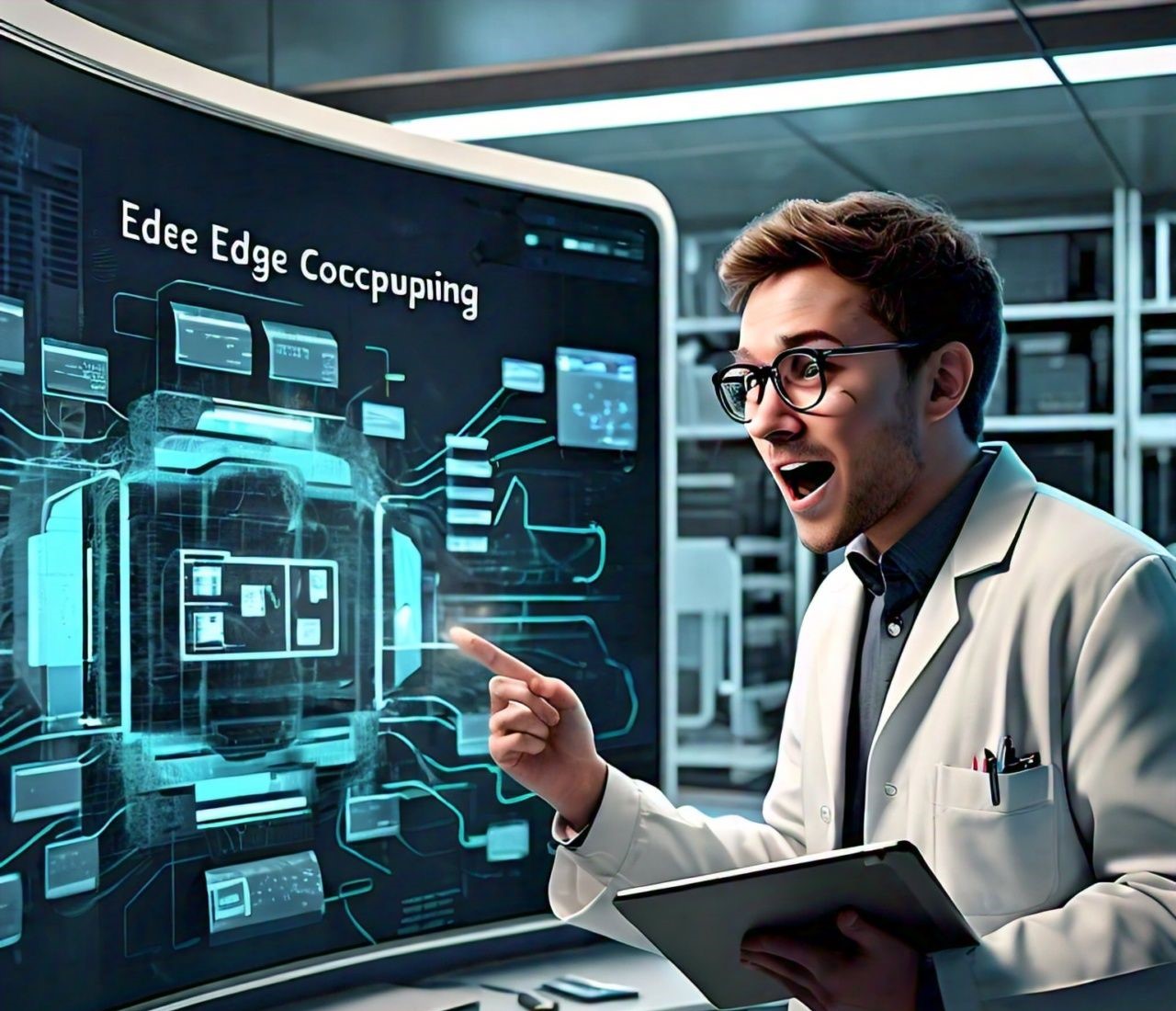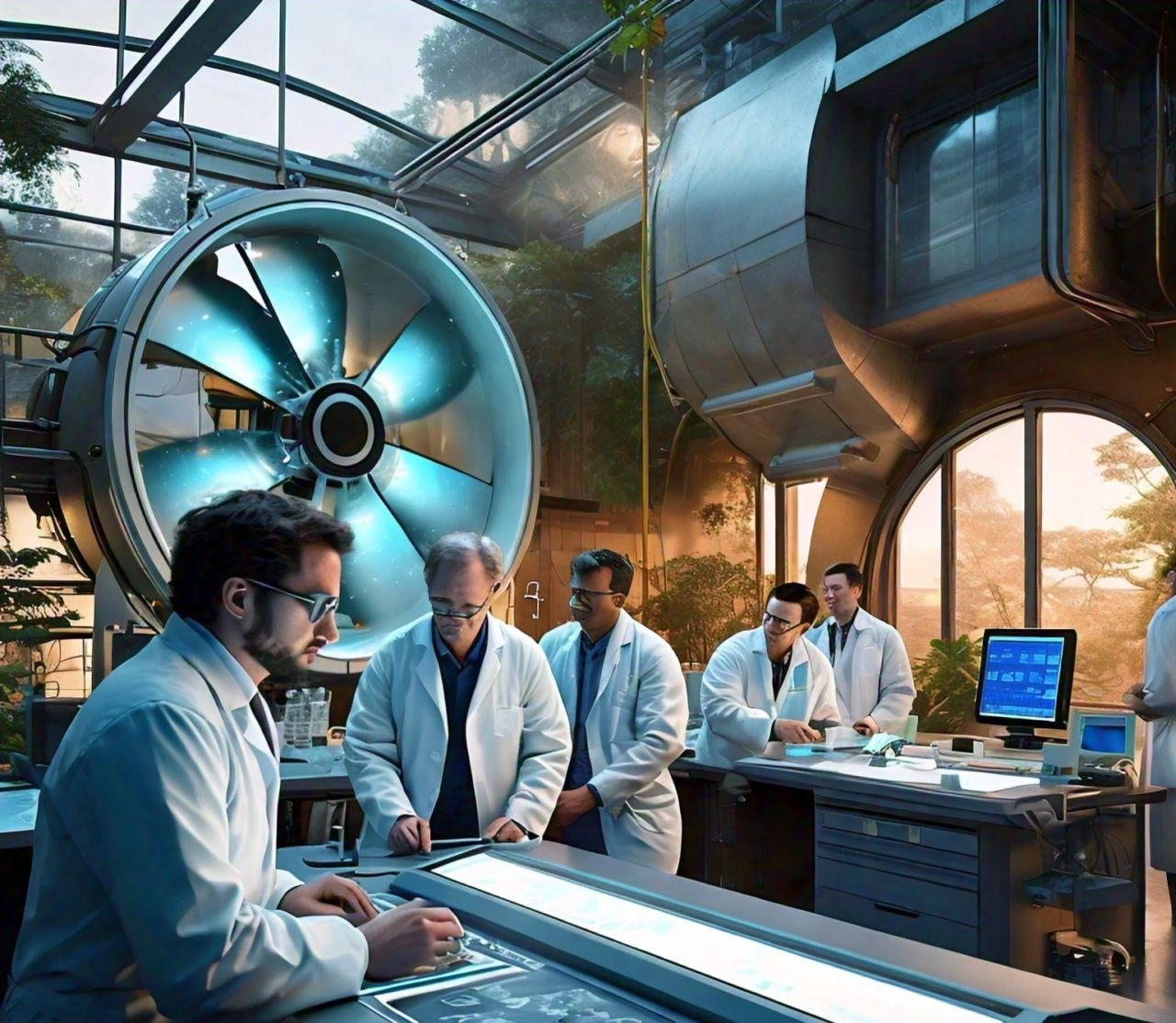Edge Computing Explained & Impact on the Future of Technology
Explanation Of Edge Computing
In the rapidly evolving field of technology, edge computing has emerged as a transformative paradigm that promises to reshape how data is processed and utilized. As businesses and consumers alike grapple with an excess data generated by billions of devices, edge computing offers a proper solution to meet the demands of speed, efficiency, and real-time processing. This article delves into what edge computing is, its significance, and why it matters in today’s digital age.
Understanding Edge Computing
Edge computing refers to the practice of processing data closer to the location where it is generated, rather than relying on centralized data centers that may be geographically distant. This approach reduces late and enhances performance that allows for real-time data analysis. In essence, edge computing brings computation and data storage nearer to the devices or “edge” of the network such as sensors, smartphones, and Internet of Things (IoT) devices.
How Edge Computing Works
The traditional cloud computing model relies on centralized data centers to store and process data. While this model works well for many applications, it can introduce major delays when data must passes long distances between the device and the data center. Edge computing addresses this challenge by decentralizing the processing power. Here’s how it works:
- Data Generation: Devices at the edge of the network, such as sensors, cameras, or industrial machines that generate data.
- Local Processing: Instead of sending all the raw data to a central cloud server the data is processed locally on edge devices or nearby edge servers.
- Filtered Data Transmission: Only the most critical or summarized data is transmitted to the cloud for further analysis, storage, or integration with other data sources.
By distributing the computing workload closer to the source, edge computing minimizes suspension, reduces bandwidth usage, and improves the responsiveness of applications.
The Significance of Edge Computing
Edge computing is not just a technical innovation but it has far-reaching implications across various industries. Let’s explore the key reasons why edge computing matters:
Enhanced Performance and Reduced Latency
One of the primary advantages of edge computing is its ability to significantly reduce latency. In applications where real-time processing is crucial such as autonomous vehicles, industrial automation, and telemedicine milliseconds can make a difference. By processing data at the edge, these applications can give faster response times, enhancing their overall performance and reliability.
Improved Bandwidth Efficiency
With the explosion of IoT devices, the volume of data being generated is wondering. Transmitting all this data to centralized data centers can put immense strain on network bandwidth. Edge computing reduces this burden by processing and filtering data locally. This not only conserves bandwidth but also ensures that only relevant data is sent to the cloud, optimizing network resources.
Scalability and Flexibility
Edge computing offers scalability and flexibility that traditional centralized models struggle to match. Businesses can deploy edge devices and infrastructure incrementally, as needed, to support growing data and processing requirements. This distributed approach allows organizations to scale their operations more efficiently and cost-effectively.
Enhanced Security and Privacy
Data security and privacy are most important concerns in today’s digital world. Edge computing increases security by keeping sensitive data closer to its source, reducing the risk of exposure during transmission. Additionally, local processing allows for better control and compliance with data protection regulations, as data does not need to travel across borders or through third-party servers.
Resilience and Reliability
Relying totally on centralized data centers can create single points of failure. If a data center experiences downtime, it can distract services for all connected devices. Edge computing reduces this risk by distributing processing power across multiple edge nodes. This decentralized approach enhances the resilience and reliability of applications, ensuring continuous operation even if one node fails.
Applications of Edge Computing
Edge computing is evolving a wide range of industries by enabling new use cases and improving existing ones. Here are some notable applications:
Autonomous Vehicles
Autonomous vehicles rely on real-time data processing to navigate safely and efficiently. Edge computing enables these vehicles to process data from sensors and cameras locally, making split-second decisions without relying on remote data centers. This reduces latency and enhances the safety and performance of self-driving cars.
Industrial Automation
In manufacturing and industrial settings, edge computing facilitates predictive maintenance, quality control, and real-time monitoring. By processing data from sensors and machines at the edge, companies can detect anomalies, predict equipment failures, and optimize production processes, leading to increased efficiency and reduced downtime.
Smart Cities
Edge computing plays a crucial role in the development of smart cities. By processing data from sensors, cameras, and other IoT devices locally, city planners can manage traffic, monitor air quality, and improve public safety in real-time. This decentralized approach enables more responsive and adaptive urban management.
Healthcare
Edge computing has significant potential in healthcare, particularly in telemedicine and remote patient monitoring. By processing data from wearable devices and medical sensors at the edge, healthcare providers can offer timely interventions and personalized care. This approach also enhances data privacy and security, critical in the healthcare sector.
Retail
In the retail industry, edge computing enables personalized shopping experiences and efficient inventory management. By processing data from in-store sensors and customer interactions locally, retailers can offer targeted promotions, optimize store layouts and improve customer satisfaction.
Challenges and Considerations
While edge computing offers extreme benefits, it also presents certain challenges and considerations that businesses must address:
Infrastructure Deployment
Implementing edge computing requires deploying and managing edge devices and infrastructure, which can be complex and resource-intensive. Organizations need to carefully plan their edge deployment strategy, considering factors such as connectivity, power supply, and environmental conditions.
Data Management
Edge computing involves processing and storing data across multiple locations, which can complicate data management. Businesses must develop robust data governance practices to ensure data integrity, consistency, and compliance with regulations.
Security Concerns
While edge computing can enhance security by reducing data transmission, it also introduces new attack vectors. Edge devices can be weak to physical tampering and cyberattacks. Organizations must implement strong security measures, such as encryption, authentication, and regular updates to protect edge infrastructure.
Integration with Cloud Services
Edge computing and cloud computing are mandatory technologies. Businesses need to ensure seamless integration between edge and cloud environments for ease of the strengths of both approaches. This may involve developing hybrid architectures and using APIs for data exchange and coordination.
The Future of Edge Computing
As technology continues to advance, the future of edge computing looks promising. Several trends are likely to shape its evolution:
Increased Adoption of 5G
The rollout of 5G networks will accelerate the adoption of edge computing. With its high-speed, low-latency capabilities, 5G will enhance the performance of edge applications, enabling new use cases in areas such as augmented reality, virtual reality, and smart infrastructure.
AI and Machine Learning at the Edge
Integrating artificial intelligence (AI) and machine learning (ML) with edge computing will unlock new possibilities. Edge devices equipped with AI and ML capabilities can perform advanced analytics and decision-making locally, enabling smarter and more autonomous systems.
Edge-as-a-Service
As edge computing matures, we are likely to see the emergence of Edge-as-a-Service (EaaS) models. Similar to cloud services, EaaS will provide businesses with on-demand access to edge infrastructure and resources, simplifying deployment and management.
Sustainability and Energy Efficiency
Edge computing can contribute to sustainability efforts by reducing the energy consumption associated with data transmission and centralized processing. Future developments will likely focus on increasing the energy efficiency of edge devices and optimizing resource utilization.
Collaborative Edge Networks
In the future, we may see the rise of collaborative edge networks, where multiple organizations share edge resources and infrastructure. This collaborative approach can enhance efficiency, reduce costs, and prefer innovation through shared data and insights.
Conclusion
Edge computing represents a paradigm shift in how data is processed and utilized. By bringing computation closer to the source of data generation, it offers numerous benefits, including reduced latency, improved bandwidth efficiency, enhanced security, and increased resilience. As industries continue to embrace digital transformation edge computing will play a essential role in enabling real-time, responsive, and intelligent applications. While challenges exists and the future of edge computing is bright and the advancements in technology and infrastructure driving its growth and adoption. For businesses looking to stay competitive in the digital age embracing edge computing is not just an option. it’s a necessity.






























